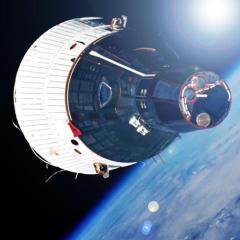This article was originally published on The Conversation. UQ Centre for Hypersonics researcher Dr Chris James looks at the technology NASA is using to help the Perseverance rover land in Mars’ Jezero Crater.
This month has been a busy one for Mars exploration.
Several countries sent missions to the red planet in June last year, taking advantage of a launch window.
Most have now arrived after their eight-month voyage. Within the next few days, NASA will perform a direct entry of the Martian atmosphere to land the Perseverance rover in Mars’s Jezero Crater.
Perseverance, about the size of a car, is the largest Mars payload ever — it literally weighs a tonne (on Earth). After landing, the rover will search for signs of ancient life and gather samples to eventually be returned to Earth.
The mission will use similar hardware to that of the 2012 Mars Science Laboratory (MSL) mission, which landed the Curiosity rover, but will have certain upgrades including improved rover landing accuracy.
Curiosity’s voyage provided a wealth of information about what kind of environment Mars 2020 might face and what technology it would need to survive.



